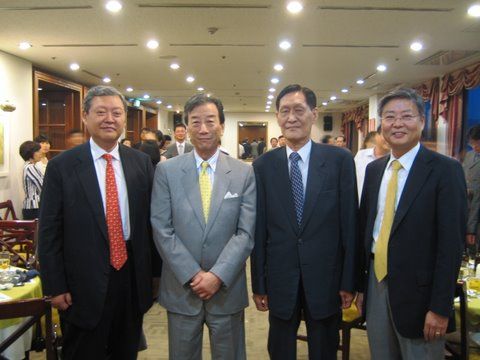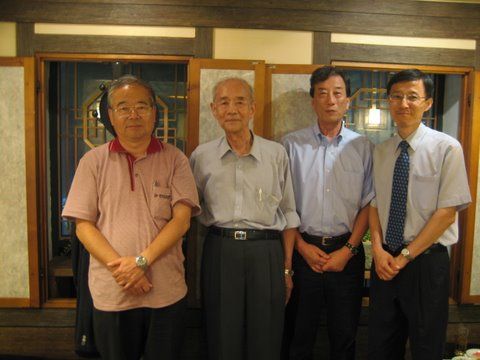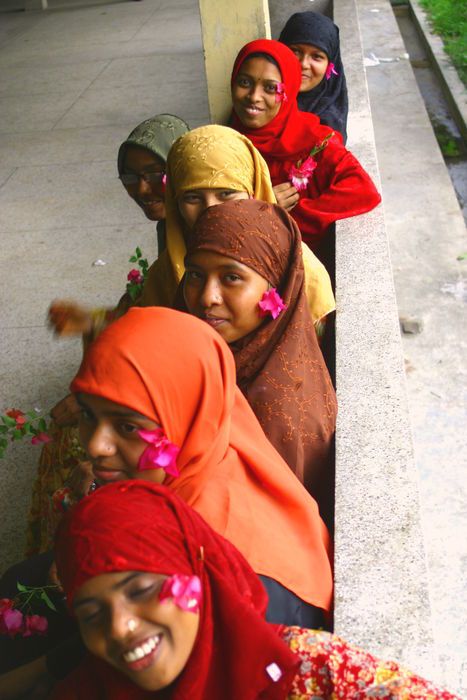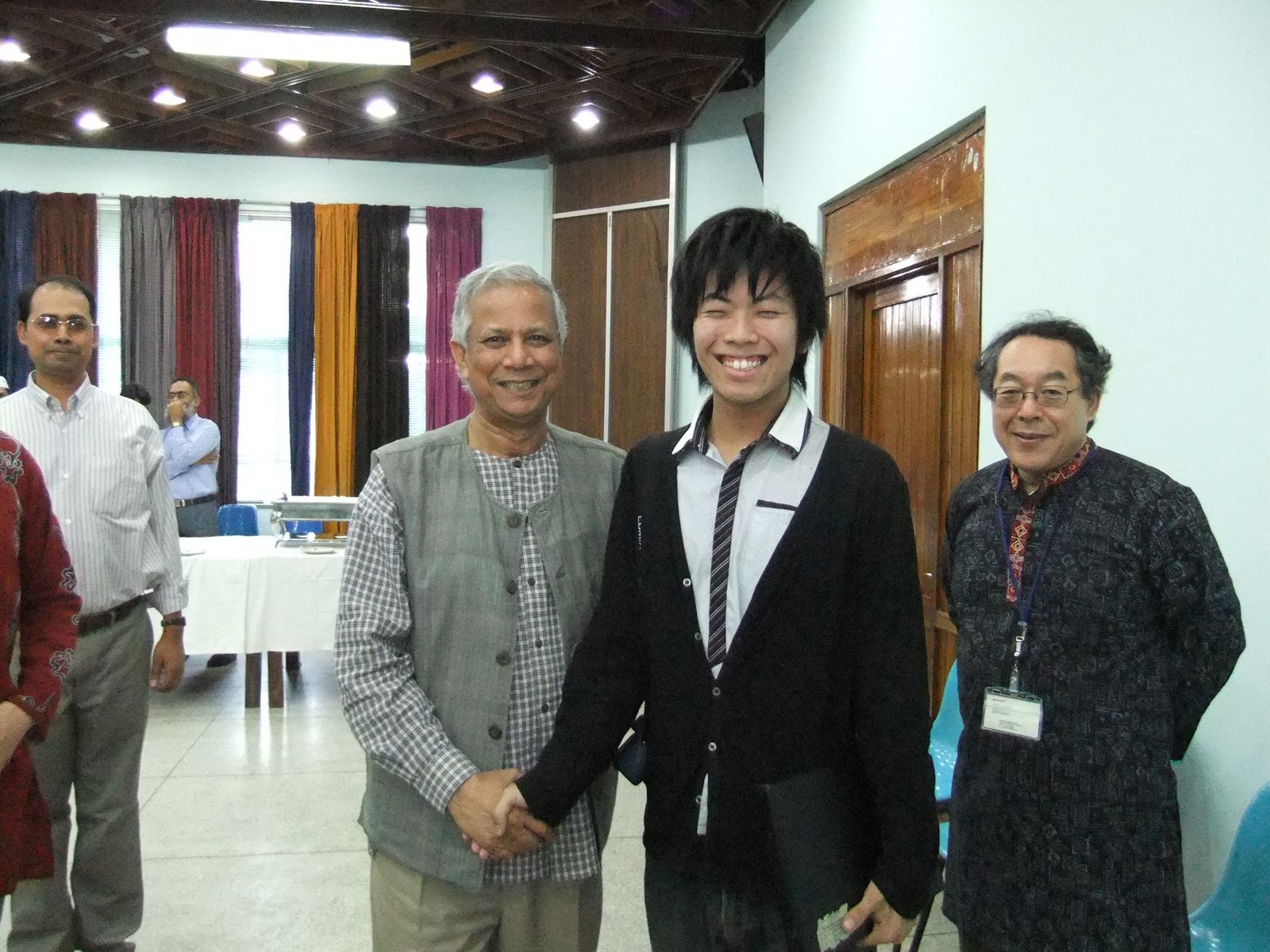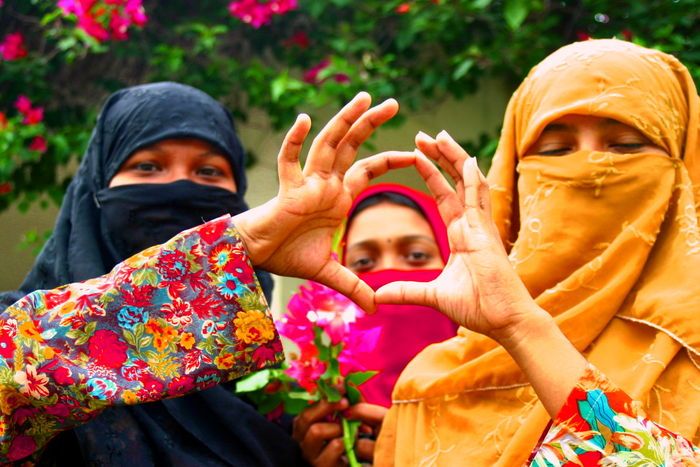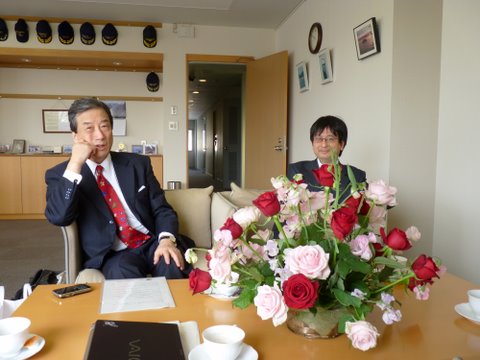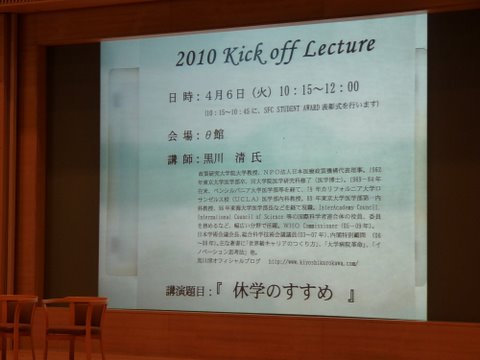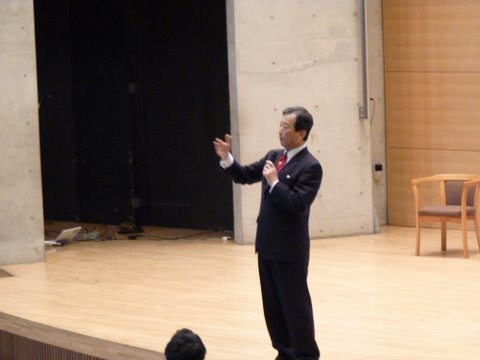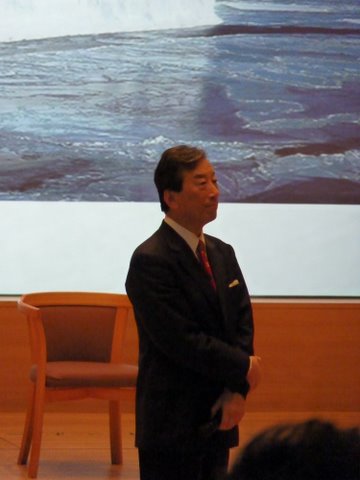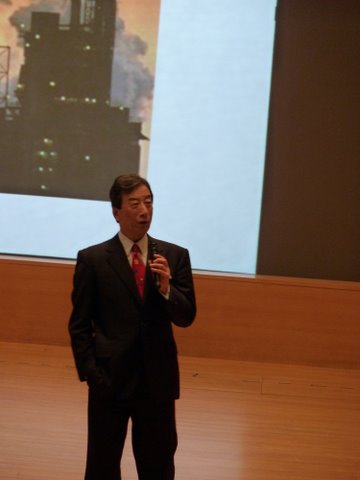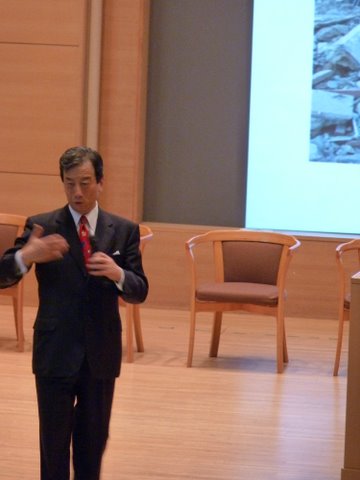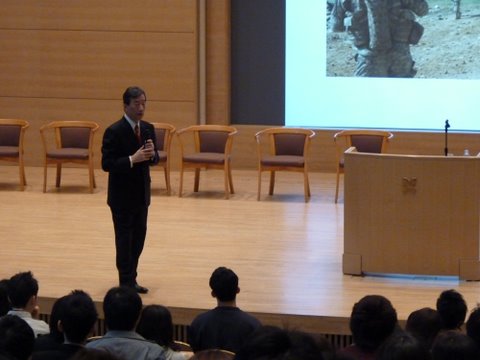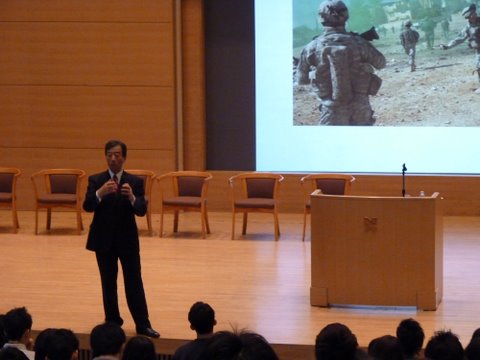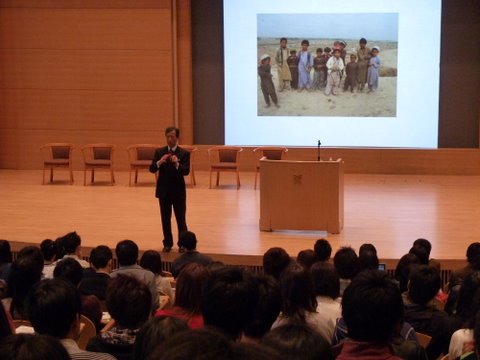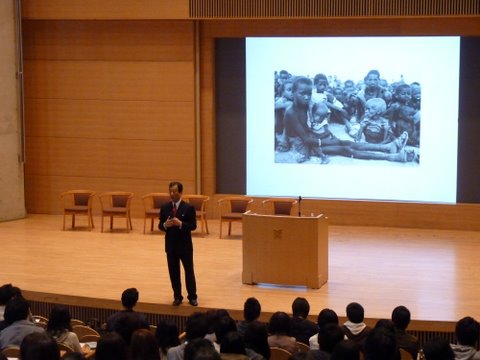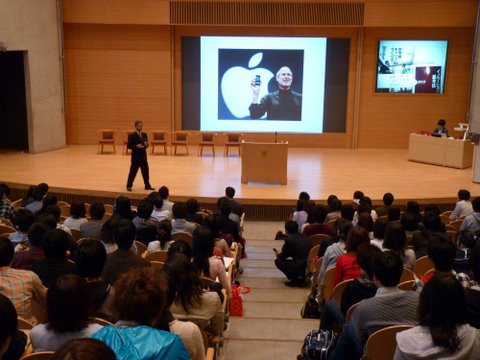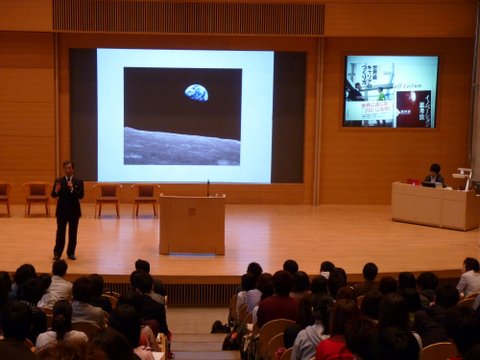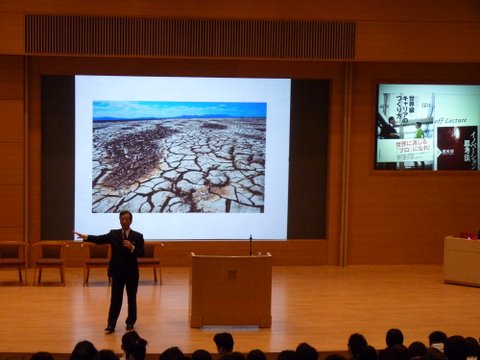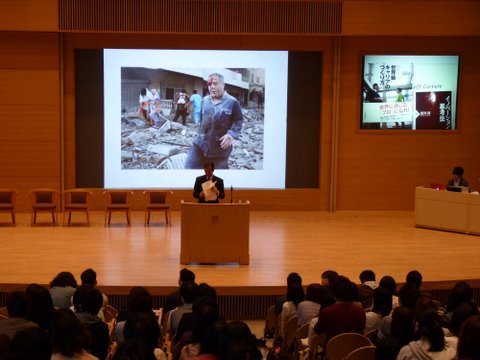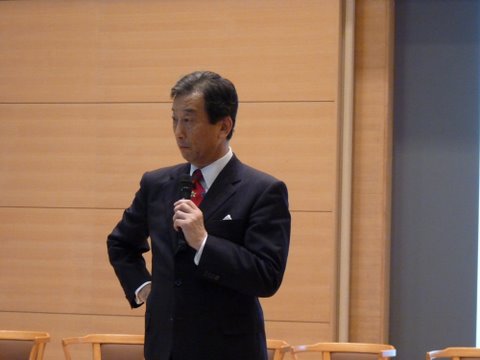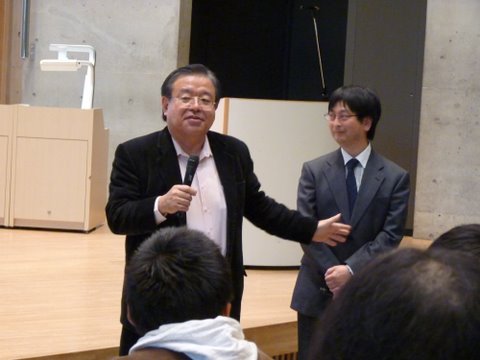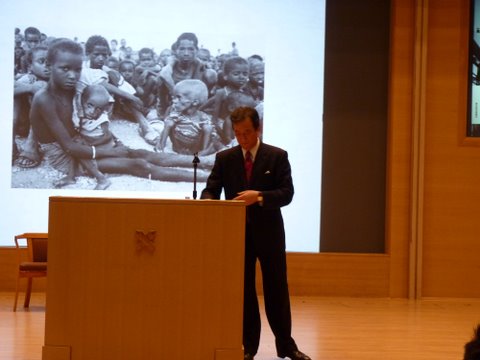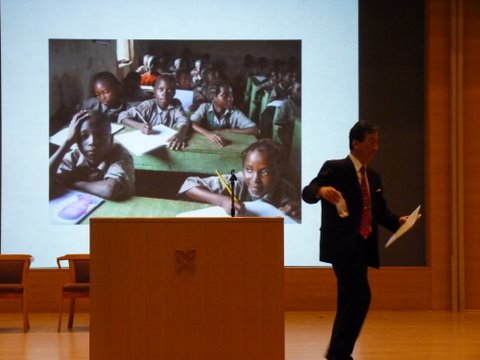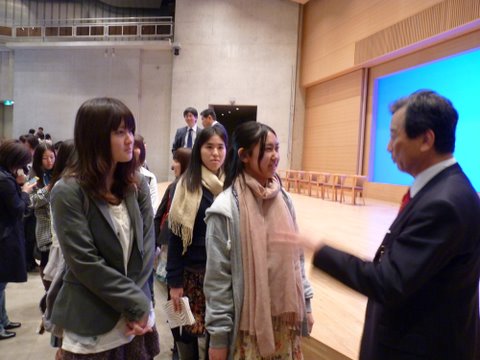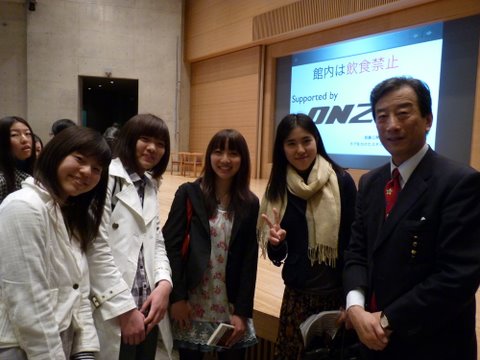→Japanese
Keio University Shonan Fujisawa Campus (SFC) organized a series of events to welcome 1,000 freshmen and on April 6th, I was invited to deliver a special lecture for this new class which is a great honor. After having a brief conversation with Professor Jun Murai (Ref.1) (Dean, Faculty of Environment and Information Studies) and Professor Jiro Kokuryo (Ref.1) (Dean, Faculty of Policy Management), I talked for about 80 minutes at the θ Hall (I was told that the lecture was relay broadcasted at a separate room for people who were unable to be seated at the Hall.)
SFC is celebrating its 20th anniversary this year. On April 4th they had a number of events (in Japanese) with alumni and faculty to commemorate its history. I am very close to several alumni through my work. Each and all one them are out of ‘Japanese common sense’ and has global careers…. And what makes it unique about SFC is that being ‘out-of-box’ does not seem so strange. I had an opportunity to hear about their future plans as well.
Their home page introduces the history of SFC, how it is like today, its campus, etc. and I am sure you can easily imagine how nice this university is.
I understand that about 18% of the newcomers are from overseas and a high percentage (about 40 to 50%) of the Japanese students have experience of having lived abroad. The students are encouraged to study abroad while they are enrolled at SFC and they are also planning to make it possible for students to graduate by finishing all courses in English starting from next year.
My lecture will be uploaded in their web site, too. In the latter half of my lecture, I showed in my back a series of views that were relevant to the content of my talk.
By the way, I am making it a rule for these couple of years not to use power point slides at lectures (with 2 or 3 exceptions). Why? Well, it depends on what you are talking about, but to begin with, policy makers don’t use slides. Have you ever seen President Obama or former Prime Minister Koizumi giving speech using slides? I assume not. So this is why. The point is how you communicate the core message effectively. After all, I am not presenting the outcomes of my research, so that is most important for me.
In my speech, I focused on the globalization of the world and the challenges that Japan face today along with background information such as Japan in 1992, the year most of the newcomers were born, and the overview of the changes of the world during these years. This is the theme that repeatedly appears in various ways under different titles in my web site.
Especially, most of the (Japanese) men used to be caught in the common thinking that ‘a Single Track’ career is authentic. Women, on the other hand, were free to take ‘multiple tracks’ because the single track system did not benefit them ? they cannot go higher, especially in the latter part of career. So, in recent 20 years, i.e. since about the time when these new students were born, we saw many women who succeeded in making most of their own ‘personal talents’ at overseas. Men have more difficulty in spreading horizontally because their thinking and actions tend to go inside even they felt (or maybe they don’t feel so….) that something is wrong about their ‘Single Track’ career in our ‘Tate shakai (Hierarchical society)’.
‘An Encouragement of Learning (Gakumon no Susume)’ (1876) by Yukichi Fukuzawa, the founder of Keio University was apparently the standard in modern Japan after the Meiji Restoration (Meiji Ishin). Today in this global age, however, I don’t think it necessary for undergraduates to graduate in 4 years. Take 5 years, and spend total 1 year (could be divided) doing social activities, studying abroad, getting involved in activities at overseas, living in various countries, travelling. Go ‘Out’, feel and sense from ‘Outside’ and look at your ‘self’, see and learn the many aspects of the world, feel the difference, and hence see and feel Japan from ‘Outside’. Through such experience students will make friends, relationships at multiple layers of the society, internationally. Through such experience they will acquire sensibility to feel ‘difference, diversity’ that exists in this world. It is such sensibility, ability, human networks that enables youth to find their mission, their value to address to this global world. It is for this reason that I propose “Taking Leave of Absence from School in College or Undergraduate”.
To begin with, I don’t see much promising future in any enterprise that seeks to ‘informally hire students at their 3rd year of undergraduate school.’ Judging from global standard, Japanese society that gives higher evaluation to such universities and companies is very exceptional. I honestly want people at ‘higher ranks’ in the Japanese society to wake up. It’s about time.
In the end of my speech, I introduced just a part of‘my favorite 14 minutes speech’, by Steve Jobs, the icon of IT who brought about drastic changes to the world through invention and production of Mcintosh, iTune, iPod, iPhone, iPad, etc., which was delivered at the commencement of Stanford. I then I wrapped up my speech.
After the lecture, I had a wonderful time talking with many, many students who gathered around me.
I also received many powerful messages responding to my 3 tweets in twitter http://twitter.com/ which I have sent out during my rail travel from home to the campus. This was a nice surprise, too.
